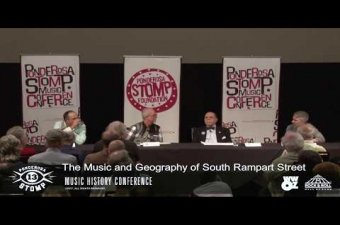The Harlem of New Orleans: South Rampart Street Tour
This tour looks beyond the high-rises and parking lots of the Central Business District to the mostly Black neighborhood that filled these blocks from the late 19th century through the middle of the 20th.
While jazz wasn’t created in one particular place or moment, no venue was more important to the process than the Eagle Saloon building. A few doors down, the Iroquois Theater, a vaudeville house, was the first venue anywhere to present jazz in a concert setting. Jazz pioneers were also regulars at the Little Gem Saloon and the Red Onion.
Louis Armstrong grew up just blocks from South Rampart Street, and shared some formative experiences with the Karnofsky family on the 400 block. One of the Karnofsky sons went on to establish the landmark Morris Music store just down the street.
McDonogh #35 High School’s prodigious music program cultivated generations of musicians after the emergence of jazz. By the 1930s, its graduates were playing in big bands at the nearby Astoria Hotel.
In the 1940s, the Bop Shop helped instigate the R&B era in New Orleans, and a new generation of artists brought the modern sound to clubs like the Downbeat. The demolition of a swath of the neighborhood depressed South Rampart Street in the 50s, but the One Stop Record Shop kept churning out R&B into the 60s.
Read more about the cultural history of South Rampart Street.
Places in this Tour
Videos

From the 2017 Ponderosa Stomp Music History Conference, Richard Campanella, Bruce Raeburn, and "Deacon" John Moore discuss the music and geography of South Rampart Street with moderator Jordan Hirsch.
Video posted by The Ponderosa Stomp Foundation.
From the 2017 Ponderosa Stomp Music History Conference, Richard Campanella, Bruce Raeburn, and "Deacon" John Moore discuss the music and geography of South Rampart Street with moderator Jordan Hirsch.



